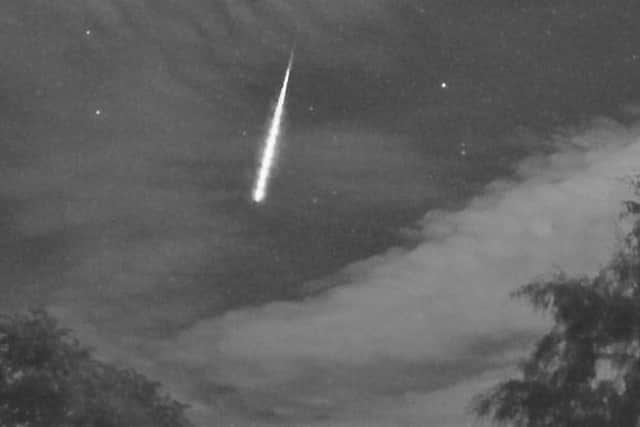Fireball from space shot over Milton Keynes on Monday night, experts confirm
and live on Freeview channel 276
The bright ball of fire spotted shooting across the skies of MK on Monday evening was rock from space, experts have confirmed.
Local people posted sightings and even photos on social media of the strange ‘shooting star’ asking what it could be.
Advertisement
Advertisement
Now the Natural History Museum has confirmed it was a space rock that was ejected from the asteroid belt and travelled hundreds of millions of kilometres to Earth.


Analysis by the UK Meteor Network (UKMON), shows the rock simply was not big enough to make it to the ground so it can't be called a meteorite. It is thought it was the size of an orange.
Dr Ashley King, an expert on meteorites at Natural History Museum and member of the UK Fireball Alliance (UKFAII), said: “At around 20.00 GMT on 9 January, it was spotted falling in the UK. It was recorded falling on many of the UKFAII's cameras, as well as countless dashboard cameras and video doorbells.
“This footage suggests that it passed over Oxford and west of Milton Keynes, continuing towards Northampton where the fireball was extinguished at an altitude of around 35 km.
Advertisement
Advertisement
'Had it been large enough, it probably would have landed somewhere in the Midlands, but unfortunately we don't think anything made it to the ground this time.'
Researchers are said to be “disappointed” that the rock did not fall to Earth but they are pleased by how quickly they were able to respond.
Dr King said: “We should get two to three small meteorite falls in the UK each year, and now we have a huge network of cameras we're seeing more and more of them. This is a change from, say, 20 years ago, where maybe only a few people would have recorded them.”
He added: “The fragment came from somewhere in the outer asteroid belt, and hit Earth's atmosphere at around 10 kilometres per second which is quite slow for these rocks.
Advertisement
Advertisement
“This would normally be favourable for it to fall to Earth. However, as the rock was quite small, being around the size of an orange and weighing less than 100 grams, we think that none of the material survived its journey through the atmosphere...”
.